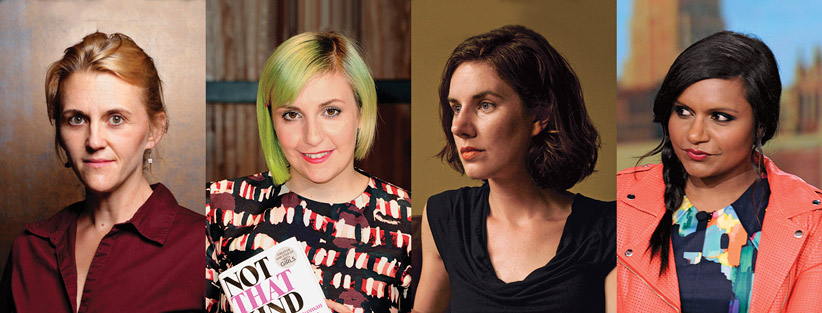Why women write essays—and sell lots of books
Women writers turned an unfashionable genre into the publishing trend of 2014
Leslie Jamison
Share

The end of a year brings an onslaught of “best of” cultural lists and its corollary of overarching annual trends. And it’s all too easy to pigeonhole the plethora of excellent essay-writing by women this year into some neat fad—the book world’s equivalent of “radiant orchid,” which Pantone declared the colour of 2014. But, book after book—from Eula Biss’s On Immunity, a personal reflection on the history of vaccination, to collections such as Laura Kipnis’s Men, an examination of bad boys and their appeal (especially to Kipnis), to Daphne Merkin’s The Fame Lunches—suggest there is something in the culture that made 2014 the year of the female essayist.
Essays are hardly a new form; Montaigne, who invented them, died more than 400 years ago. But a wide-ranging group of women, black and white, old and young, political or celebrified—think of Lena Dunham and Not That Kind of Girl—have invigorated the essay and reached ever-wider audiences as a result. Leslie Jamison’s The Empathy Exams, published in April, was a surprise New York Times bestseller, thanks to rapturous reviews and wildfire word-of-mouth. An effortless mix of memoir, reportage and broader rumination, it moves from maximum-security prisons to her own body, in the stunning title essay on her work as a medical actor.
Jamison saw that same ethos in a number of other well-regarded books. “So many of the female essay collections that have hit a nerve this year have found a way to bring together very different kinds of expression—personal and critical and journalistic—without getting dismissed for their subjective stances or excessive first person,” she said. That spirit has only broadened for Jamison, who published 52 Blue, an investigation into what she calls “the loneliest whale” with ebook start-up the Atavist, while Little, Brown, an imprint of Big Five publisher Hachette, signed up her next two works of non-fiction.
Then there’s Roxane Gay, whose essay collection Bad Feminist has racked up printing after printing, standing-room-only bookstore appearances, and a new columnist gig at the Guardian. It’s done so largely by finding audiences online who shared her essays—many of which appeared in venues such as The Rumpus and BuzzFeed—in near-compulsive fashion.
Social media is a big factor in the success of this year’s crop of female essayists, notes Laura Miller, Salon’s literary critic. “Where would we have read this stuff before?” Miller asks. “In publications mediated by editors who, in the past, might have decided the subject matter was too ‘small’ or personal. But now, someone can get a huge readership for an essay-like blog post, maybe build a Twitter following and develop a public persona. Essayists can go directly to the audience, which, if it likes the work, will spread the word.” But there’s also an argument to be made about market forces. When famous figures such as Dunham, Tina Fey and Mindy Kaling embrace the essay format, publishers suddenly see economic value in less famous, equally strong female voices.
Meghan Daum, whose collection The Unspeakable was just published, finds some irony in this newfound popularity. “I can’t tell you how many publishers and agents over the years told me, ‘Don’t write essays, it’ll ruin your career!’ Or, ‘If you must write them, call them “true tales” or “notes from a life”; just don’t use the word essay!’ ” she says. Daum notes that essays published online, especially thoughtful meditations on gender, relationships, and the female body, are “whetting people’s appetites for writing that takes a personal approach to phenomena that exist in the larger world, which is what a personal essay should set out to do.”
She’s wary of pigeonholing female essayists: “I would be just as happy to see a collection of exciting, interesting essays by a man as by a woman. I’d hate for it to turn into a woman’s genre.” Jamison is optimistic that that scenario isn’t likely. She sees a levelling of the playing field: “It gives me hope that confessional or personal writing from women is no longer getting dismissed as navel-gazing, but can be seen as part of a larger and undeniably ambitious project of expression.”